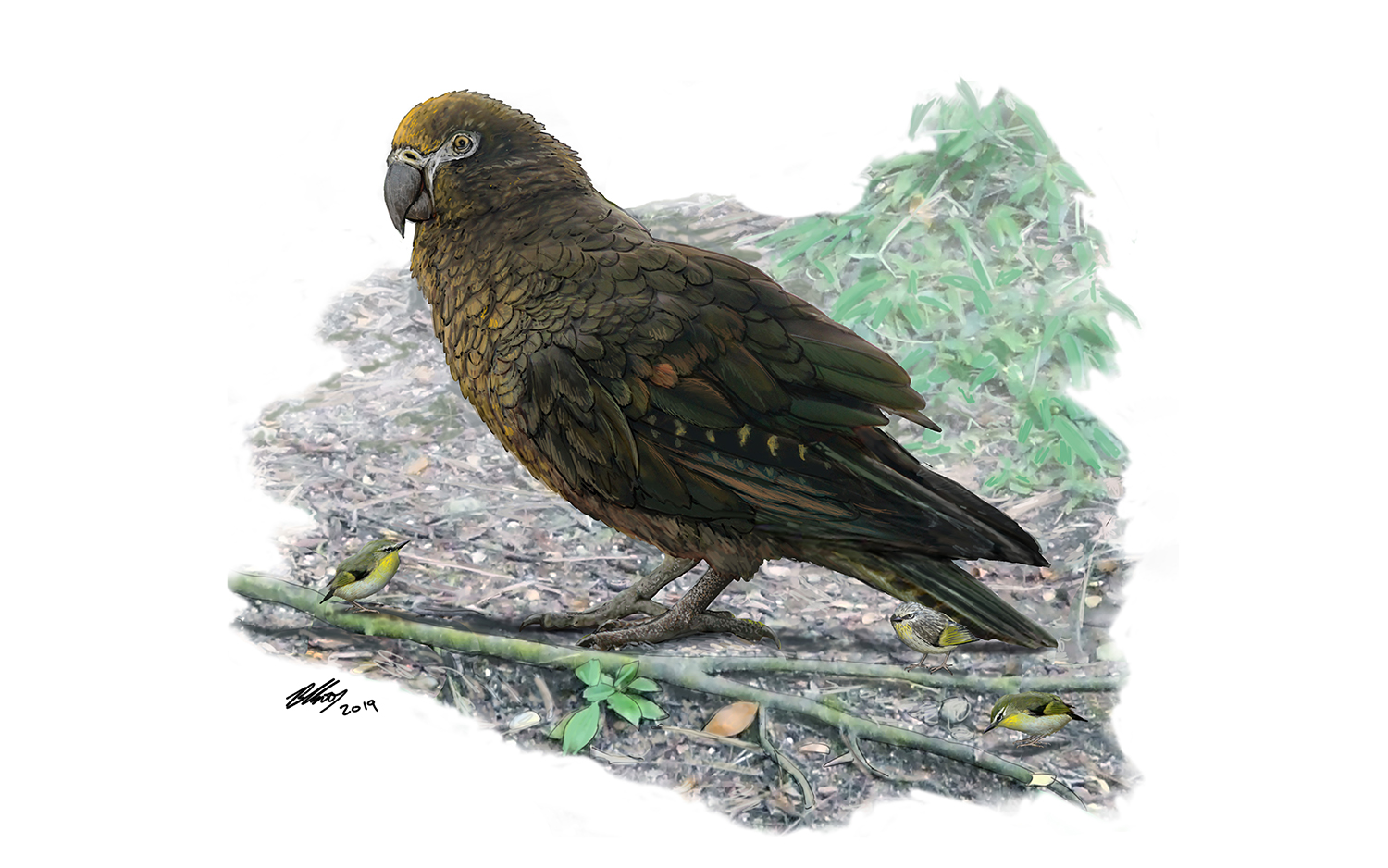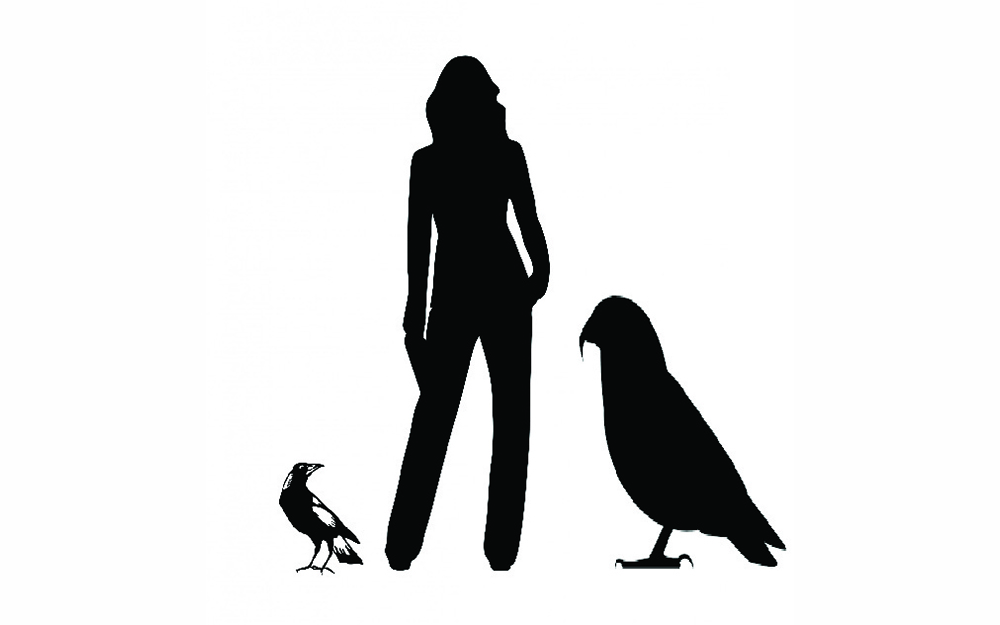This Parrot Stood 3 Feet Tall and Ruled the Roost in New Zealand Forests 19 Million Years Ago

Imagine a parrot standing 3 feet (1 meter) tall, about the height of a 2-year-old child. This giant bird lived in New Zealand around 19 million years ago; it was the largest parrot that ever lived, and is the only known giant parrot in the world.
Paleontologists recently described the gargantuan bird from a pair of fossilized leg bones found at a fossil-rich site in St. Bathans, New Zealand. The bones were "large and robust," and in life the bird may have weighed up to 15 pounds (7 kilograms), the researchers reported in a new study.
They named the bird Heracles inexpectatus: "Heracles" is a nod to the mythic Greek hero, also known as "Hercules." The species name "inexpectatus" addresses how unexpected it was for the researchers to discover this previously unknown colossus. [Wipe Out: History's Most Mysterious Extinctions]
New Zealand is known for other types of extinct giant birds that once stalked its forests and grasslands and soared in its skies. The massive, flightless moa (Dinornis robustus) stood as tall as 6 feet (2 m) at the shoulder and weighed up to 530 lbs. (240 kilograms), while the Haast's eagle (Hieraaetus moorei) — the largest known eagle of all time — had a wingspan of about 10 feet (3 m) and weighed up to 26 lbs. (12 kg).
Scientists discovered the parrot leg bones in 2008; for years, they hunted for more fossils of the animal, but further evidence remained frustratingly elusive, said lead study author Trevor Worthy, an associate professor with the College of Science and Engineering at Flinders University in Australia.
"Ten years on and thousands of bones later, no more has come to light. So we decided, well, we need to tell this story now," Worthy told Live Science in an email.
The bones were solid and thick-walled, suggesting Heracles wouldn't have been able to fly. However, it may have been able to climb trees and glide like the modern kakapo (Strigops habroptilus), a large parrot that is also native to New Zealand, Worthy said. Kakapos are currently the biggest parrots in the world, but Heracles was easily twice as massive as its pudgy, flightless cousins.
Get the world’s most fascinating discoveries delivered straight to your inbox.
"It lived in a subtropical rainforest where there were abundant laurels, palms, cycads and casuarina trees — all produce fruit and seeds that this parrot would have eaten," Worthy said. Heracles likely dominated this niche on the forest floor, which could explain why the species evolved to be so much bigger than other parrots.
What ended the reign of these mighty birds? The culprit was probably climate change, Worthy said. Around 12 million to 13 million years ago, global temperatures plummeted; over time, New Zealand's tropical forests became temperate forests, greatly reducing the number of fruit trees across the island.
The disappearance of Heracles' main food source "would be a major candidate for causing this bird to go extinct," Worthy said.
The findings were published online today (Aug. 6) in the journal Biology Letters.
- Avian Ancestors: Dinosaurs That Learned to Fly
- Pretty Bird: Images of a Clever Parrot
- Bird Study Reveals 10 Things You Didn't Know
Originally published on Live Science.

Mindy Weisberger is a science journalist and author of "Rise of the Zombie Bugs: The Surprising Science of Parasitic Mind-Control" (Hopkins Press). She formerly edited for Scholastic and was a channel editor and senior writer for Live Science. She has reported on general science, covering climate change, paleontology, biology and space. Mindy studied film at Columbia University; prior to LS, she produced, wrote and directed media for the American Museum of Natural History in NYC. Her videos about dinosaurs, astrophysics, biodiversity and evolution appear in museums and science centers worldwide, earning awards such as the CINE Golden Eagle and the Communicator Award of Excellence. Her writing has also appeared in Scientific American, The Washington Post, How It Works Magazine and CNN.



